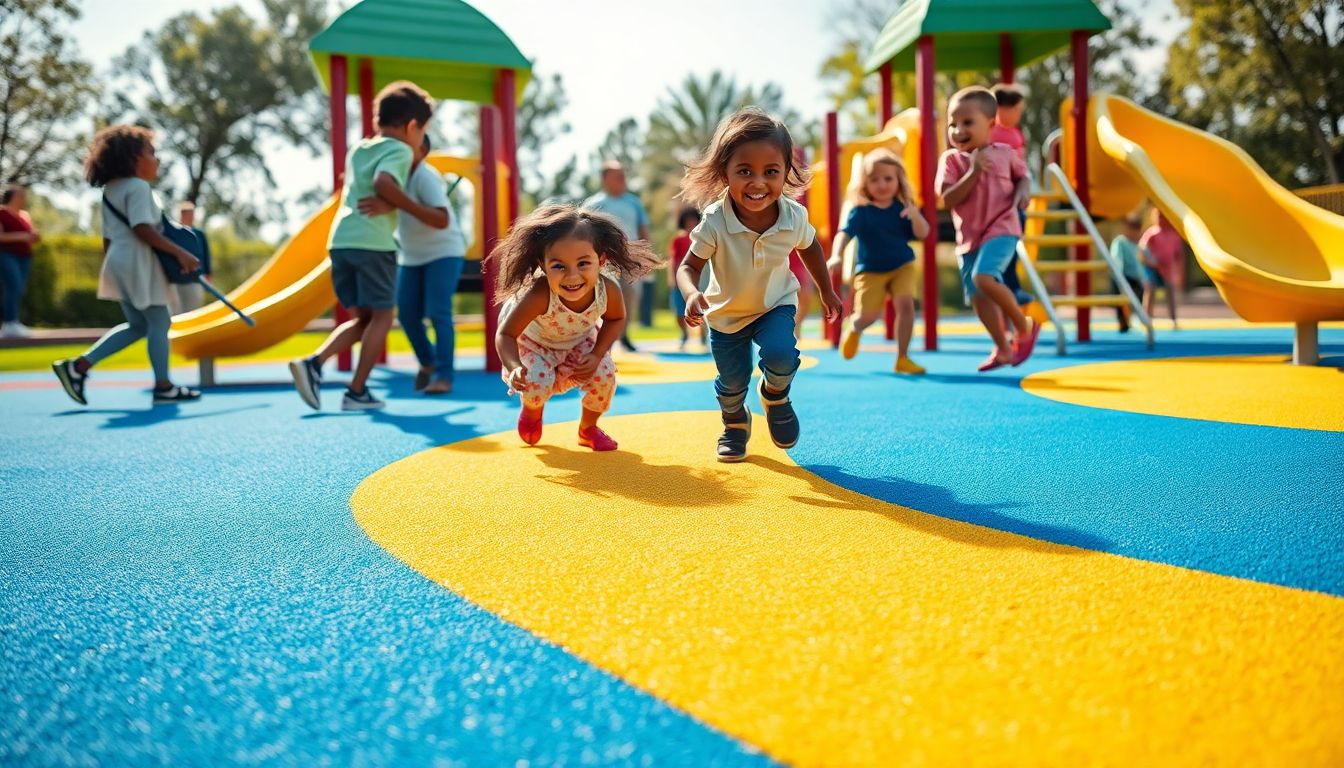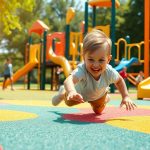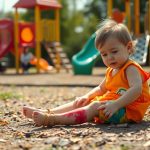The Ultimate Guide to Playground Safety Surfaces
Protecting children while they play is a fundamental responsibility for parents and communities alike. Playgrounds serve as essential spaces for children to explore, learn, and socialize. However, ensuring that these environments are safe is paramount. This guide dives deep into playground safety surfaces, helping you make informed decisions for the best play experiences.
The Importance of Safe Play Environments
Creating safe play areas is not just about fun; it’s about prevention.
Playground Injuries: Statistics and Trends
According to the National Safety Council, over 200,000 children visit emergency rooms each year due to playground-related injuries. Falls are a major contributor to these accidents. Choosing the right safety surface can significantly reduce injury risks.
Setting the Stage for a Safer Play Experience
Safe playground surfaces cushion falls and minimize injuries. They enable children to engage in physical activities while feeling secure. Prioritizing safety surfaces leads to fewer accidents and promotes carefree play.
Understanding Playground Safety Surface Materials
Different materials offer unique benefits and drawbacks. Familiarize yourself with common options to choose the right one.
Rubberized Surfaces: Pros, Cons, and Applications
Rubber surfaces come in two types: poured-in-place and tiles. They provide excellent shock absorption, reducing injury risk.
- Pros: Durable, very low maintenance, and waterproof.
- Cons: Higher initial cost.
Engineered Wood Fiber: Durability, Maintenance, and Cost
Engineered wood fiber (EWF) is made from recycled wood. It provides a natural look while ensuring safety.
- Pros: Cost-effective and biodegradable.
- Cons: Requires regular maintenance to maintain depth and integrity. Not Long LAsting
Poured-in-Place vs. Loose-Fill Surfaces: A Detailed Comparison
Poured-in-place surfaces offer a seamless finish, while loose-fill materials like sand or mulch are easy to install but require constant upkeep.
- Poured-in-Place:
- Pros: No shifting or compaction.
- Cons: Higher upfront cost.
- Loose-Fill:
- Pros: Cost-effective and easy to replace.
- Cons: Shift with use and require replenishment.
Choosing the Right Surface for Your Playground
Selecting a surface involves various factors. Consider the following key aspects.
Considering Age and Activity Level
Younger children may need softer surfaces, while older kids might benefit from more durable options. Analyze the age group to determine the best fit.
Assessing Impact Attenuation and Fall Height
Impact attenuation measures how well a surface can absorb shocks. Higher fall heights require materials with better shock absorption. Always check manufacturer specifications.
Budgetary Constraints and Long-Term Maintenance
Consider the initial investment versus long-term maintenance costs. Some surfaces require more upkeep than others, affecting overall budgeting.
Meeting Safety Standards and Regulations
Ensuring compliance with safety standards is critical to protecting children.
Compliance with ASTM Standards and Local Codes
Adhere to local regulations and ASTM standards for safety surfaces. These guidelines provide benchmarks for quality and safety.
Regular Inspections and Maintenance Schedules
Establish a routine inspection protocol to identify potential hazards early. Regular maintenance extends the life of your surface and keeps it safe.
Case Studies: Successful Playground Safety Surface Installations
Consider case studies that highlight successful implementations. Analyze lessons learned for better planning.
Installation and Maintenance Best Practices
Smart installation and upkeep are key to safe playground surfaces.
Proper Surface Depth and Leveling Techniques
Ensure the surface is installed at the correct depth for maximum effectiveness. Leveling is crucial to avoid areas that may pool water or shift.
Addressing Common Issues: Drainage, Wear, and Tear
Manage drainage properly to prevent flooding and erosion. Regularly check for wear and tear, especially after heavy use or severe weather.
Long-Term Care and Replacement Considerations
Plan for the eventual replacement of surfaces. Knowing when to replace ensures safety and enhances playability.
Beyond the Surface: Completing the Safety Picture
Surface safety is just one aspect.
Equipment Selection and Placement
Choose age-appropriate equipment and ensure it’s correctly placed. Proper spacing reduces collision risks.
Supervision and Risk Management Strategies
Active supervision is vital. Implement guidelines for adult oversight during playtime to manage risks effectively.
Creating a Comprehensive Safety Plan
Develop a safety plan that integrates equipment, surface materials, and supervision policies. This holistic approach enhances overall safety.
Conclusion: Prioritizing Playground Safety for Lasting Fun
Creating a safe playground environment is essential for joyful play.
Key Takeaways: Ensuring a Safe and Engaging Play Area
- Choose the right surface based on age and activity.
- Ensure compliance with safety standards.
- Regular maintenance is crucial for lasting safety.
Resources for Further Research and Support
Seek resources from local agencies and safety organizations for ongoing updates and support.
Invest in Playground Safety Today with FLEXI-PAVE!
Take the next step by assessing your playground safety surfaces. Prioritize safety now for happier, healthier play experiences in the future!





